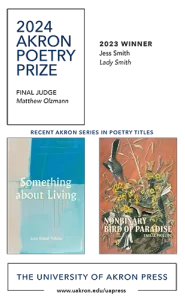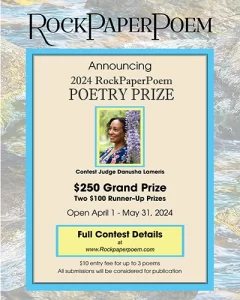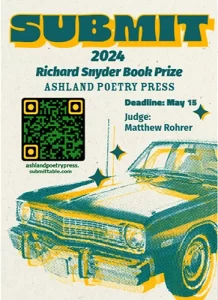Becoming the Sound of Bees
Marc Vincenz’s eighth collection of poetry, Becoming the Sound of Bees, is rich with disorienting imagery and descriptive language. Vincenz uses vocabulary reminiscent of an album by The Mars Volta, yet the music here is uniquely his own. Readers are transported to variously strange landscapes and introduced to poems brimming with noise.
Marc Vincenz’s eighth collection of poetry, Becoming the Sound of Bees, is rich with disorienting imagery and descriptive language. Vincenz uses vocabulary reminiscent of an album by The Mars Volta, yet the music here is uniquely his own. Readers are transported to variously strange landscapes and introduced to poems brimming with noise.
The collection’s title comes from the poem “Static,” which brings readers into a world seemingly devoid of the natural sounds of wildlife:
& the sky was bird-
less
we listenedfor the sound of bees
& hearing nothingbut the wind box the panes
we began to hum & buzz & drone
In a world hushed in silence, the speaker suggests an urgency to mimic the sound of bees, creatures that many will recognize as important to the health of the planet. Although many of the landscapes portrayed here lack descriptions of a lush natural world, there are sounds that modern readers will recognize: the hum of rain; the cackle of birds; the “Dead crackle of weed”; the “faint whispers” and “That softly softly weeping of waterfalls and / rapids.” Although the imagery is often disorienting and the setting changes swiftly throughout the collection, Vincenz has a way of pulling readers into the world on the page.
The poem “Old Country” is situated in a valley rich with history:
In this hidden valley night crawls slow, here you
find the lost snow of Caesars, the pit that helda hundred angry Celts roaring at shin-yapping hounds,
bleeding spikes thick as arm-wrestlers.
Readers find themselves in a world where cows graze on the hillside and the landscape is dotted with lichens and crowberries, a world reminiscent of older, simpler times. Later, in “Fossil,” readers are transported to a very different setting where people walk a beach and find fossils and even a whale carcass that encourage reflection on the past:
He comes alive again & calls them
ancient crabs & I don’t correct himthough I know they’re trilobites, he
reaches down & feels their smoothossified shells,
The discovery of the fossil seems to bring instantaneous comfort, but the sensation is temporary and fleeting. The fossil is left behind:
he heads along
the beach passing a carcass of abeached whale torn across the shale
& he walks through the gulls thattear at the entrails trailing out into
the angry blue & the foam at hisfeet whiter than the color of his skin,
whiter than the clouds painted above.
The beach is an indication of time passed and passing, while a carcass is scavenged and will soon decay, and ancient fossils paint a portrait of now-gone creatures. The varied settings in Becoming the Sound of Bees are painted with care and attention to place and sound.
In “The Most Beautiful Book” Vincenz demonstrates his ability to drag readers face first into landscapes both dreamy and horrifying. The speaker of the poem reflects back on better times:
I consider
the once-glacier-fed dry riverbed. Clear, clean waters sluicedinto a bay of plenty—days of whales and dolphins and swordfish,
seabirds announcing the medicine of minnow and mackerel.
The reflection brings pleasant images to mind, but the next few lines awaken the reader to a current reality drenched in pollution and poverty:
Now this sea spits and froths green bile along her worn edges, and
tired Max, shadow of a child in a pale greasy-paper complexion,whose eyes that grasped constellations are grim like industrial smog.
This is a world fallen to ruins, and yet reminiscing can still bring forth beauty in a poem riddled with pollution.
Flipping through the collection will clearly indicate a wide variety of line lengths and experimentations with form. The poem “Shorelines” draws itself into thin columns that hug the margins, yet several words stick out—placed several spaces away from their neighbors—and are left, nearly forgotten, like a lone boot or odd object left tanning in the sand. The poem “Wicked Mother Mary” is situated in petite, staggered stanzas that span across two pages like a poetic checkerboard. Other poems—“Storm Cloud” and “Continuum,” for example—span horizontally across the page, forcing readers to flip the book on its side to enjoy.
This is a book where doors can fly off in “butterflies of rust,” where poems can stretch themselves sideways across the page, and worlds can build upon themselves in dizzying descriptions. This is a collection for those who enjoy digging their claws into strange landscapes and getting pulled forth by a culmination of sounds.





